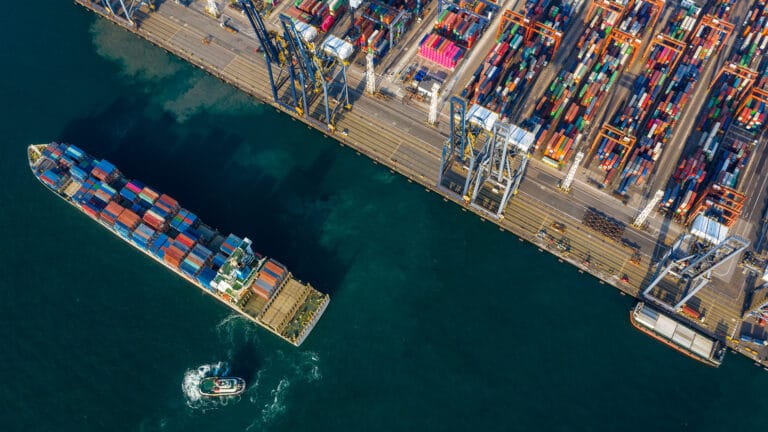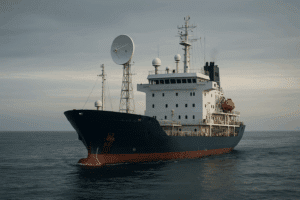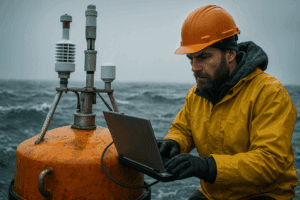Updated on 07/04/2023
What are port operations? Understanding this starts with a high-level analysis of port operations and the role of port authorities.
What Are Port Operations?
By port operations, we refer to a series of maritime procedures aimed to ensure the smooth transition of vessels and their containers from one terminal to another. Sea travel can be undertaken through many different means, with each type of vessel having its own specifications. From cargo to ferries, barges to recreational ships, virtually all watercrafts will need to rely on port operations to start or finish their maritime journey successfully.
The way ports operate will depend on a wide number of factors, from geographical characteristics to architectural structure of the terminal and ease of navigation. Ports are also subjected to state and local regulations issued by port authorities in addition to these operational factors. To better understand port operations, let’s first gain an understanding of why port authorities are in place.
What is the Meaning of ETA, ETD, ATD, & ATA in Shipping ?
Companies and people around the globe rely on precise predictions of when a vessel will arrive with a shipment of goods and services. In shipping, ETA means…
What Is The Function Of Port Authorities?
The functions
Port authorities have different functions: regulatory, commercial, and community.
The way port operations are carried out can determine the safety, security, environmental compliance, and success of a recreational or cargo shipment journey. For this reason, the role of port authorities comes with great responsibilities. Every port and terminal will differ but, overall, port authorities will oversee several functions, including:
- All maritime logistics involved in the receipt, handling, and safe storing of cargo goods from the supply chain
- Navigational assistance to all marine vessels approaching the port, such as ETA for shipping vessels
- Exercising licensing and regulatory contributions for the services rendered
Other areas that are subjected to port authority regulations are marine environment monitoring and management (including but not limited to the protection of the marine environment), financial issues, and liability for damages.
Moreover, port authorities play a crucial role in promoting economic development and social responsibility in their communities. They work closely with stakeholders (cargo owners, shipping lines, local businesses, and more).
The main goal is to ensure that their ports remain competitive and sustainable in the long term.
The challenges
Port authorities have to handle challenges to manage port operations with efficiency.
One of the most pressing challenges is capacity constraints, as ports must handle increasing volumes of cargo and vessels without compromising safety or efficiency.
Another challenge is keeping up with technological advancements, such as digitalization and automation, which can require significant investments in infrastructure and workforce training.
Additionally, port authorities must address environmental concerns and reduce their carbon footprint, while also complying with regulations related to air and water quality, waste management, and marine wildlife conservation.
Understanding Port Operations
Port operations are the authority that work alongside the port authority to undertake all of the above. They ensure that cargo is moved from source through to the destination port terminal as seamlessly as possible, keeping costs and time to a minimum. All paperwork, costs, security, and maritime travel safety are overseen by port operations.
The objective of port operations is to minimise disruption in the port by analysing all available travel data and forecasting the appropriate arrival times for all vessels and their containers. They also need to balance all incoming and outgoing activity, and to maintain clear communication with all vessels involved. Any issues that may arise need to be dealt with as quickly as possible to prevent impact on further maritime activity.

Port Operations Of The Future
New technologies
With the fast-tracking of digitalization and artificial intelligence (AI), many ports around the world are moving away from old-fashioned and time-consuming manual port operations in favor of smart technology. These services have brought us the creation of Smart Ports.
Smart Ports are a greener and digitalized upgrade of traditional ports designed to improve communication with distributors while smoothing out maritime logistics. This is done all while protecting the ocean through proper maritime environmental management. These ports rely on real-time data that is constantly being updated. Using AI for the automation of otherwise time-consuming and wasteful operations, port operations teams can now access information that helps them troubleshoot issues before they arise, saving revenue and time.
AI and automation are transforming the maritime industry throughout the supply chain. Port operations can take full advantage of these available technology services to ensure their undertakings are more accurate and streamlined. Find out how maritime and logistics software can do this for you.
Importance of Port Community System
A port community system is a digital platform. This platform facilitates the exchange of information and data related to port operations (cargo tracking, vessel schedules, etc) between all stakeholders.
The importance of PCS in port operations lies in its ability to improve efficiency, reduce costs, and enhance collaboration among stakeholders. By using a common platform for data sharing, PCS can eliminate redundant processes, streamline communication, and reduce errors and delays. PCS can also enable real-time monitoring and reporting, allowing port authorities to make informed decisions about resource allocation and risk management.
Frequently Asked Questions About Route Planning:
A series of maritime procedures aimed to ensure the smooth transition of vessels and their containers from one terminal to another
To minimise disruption in the port.
A Smart Port is a digital port. A Smart Port is a more effective, more performant, and a more economically competitive port. Not only that, but Smart Ports consider residents a key stakeholder of their activities. They use real-time information, a collaborative management approach, and essentially provide more with less
Artificial Intelligence, and more specifically machine learning, is when machines are programmed to replicate and imitate human decision-making and monitoring processes.


